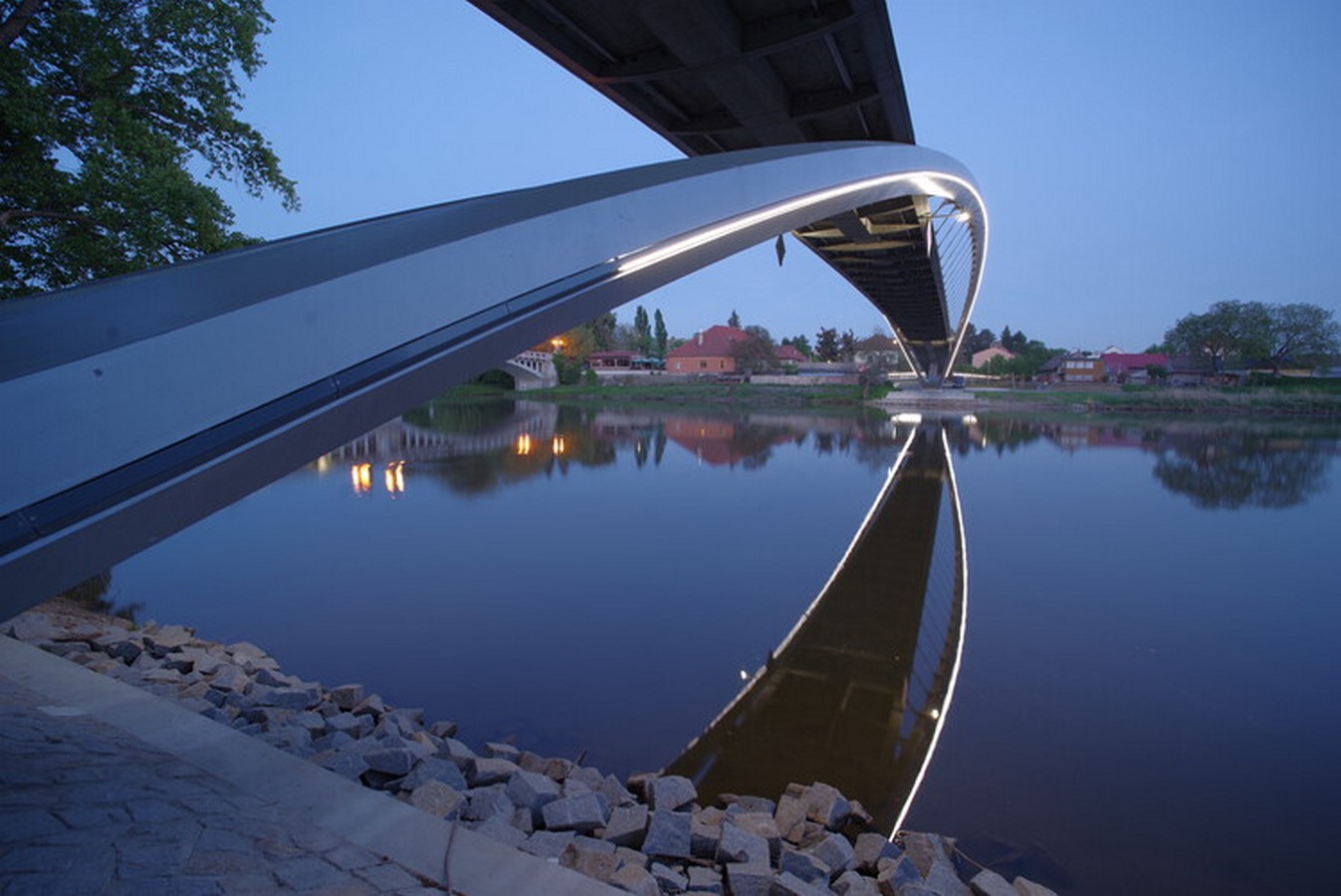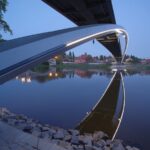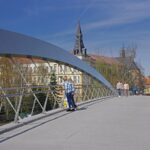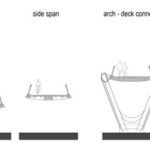
The Nymburk Pedestrian Bridge, crafted by Strasky, Husty, and partners (SHP), stands as a testament to the seamless integration of modern engineering and historical context. Spanning between the city’s historic center and the suburb of ‘Zálabí’, this bridge serves as a vital link connecting pedestrian and cycling trails along the riverbanks.
Architectural Design
Inspired by the adjacent historic arch bridge, the Nymburk Pedestrian Bridge adopts an arch structure with a longer span and no supports within the river. Two outwardly inclined steel arches support a prestressed concrete bridge deck, ensuring structural integrity while minimizing obstruction to pedestrian views of the city’s historic landmarks.

Engineering Excellence
With a total length of 203.80 meters, the bridge deck comprises eight spans ranging from 16.41 to 71.93 meters. Suspended above the river on steel arches, the 5.50-meter-wide prestressed concrete deck offers a stable pathway for pedestrians and cyclists. The arches, spanning 103.17 meters with a vertical rise of 11.25 meters, maintain a longitudinal slope not exceeding 7.70%.
Construction Innovation
Typical suspenders are formed by steel bars, with movable steel hinges facilitating connection during erection. The middle section of the bridge was assembled on the bank before being floated to the site and lifted into position. Static and dynamic loading tests ensured structural integrity and performance.

Structural Integration
The bridge forms a semi-integral structural system, with arch ribs fixed into footings and frame-connected with the deck. The deck’s robust cross-section allows for easy inspection and maintenance, while the arch ribs boast a closed one-cell cross-section, ensuring water and air tightness. Transverse stability is achieved through inclined hangers, eliminating the need for additional bracing or support beams.
Harmonious Coexistence
Situated near the old arch structure, the Nymburk Pedestrian Bridge embodies progress in engineering and technology while respecting historical precedent. Its light and transparent design, complemented by grey-green steel elements, harmonizes with the existing bridge without overpowering it. Human-scale elements ensure user comfort, while minimal disruption to river traffic and the surrounding landscape preserves the beauty of the Polabian region.
The Nymburk Pedestrian Bridge stands as a symbol of architectural innovation and cultural preservation, bridging the gap between tradition and progress with elegance and efficiency.









